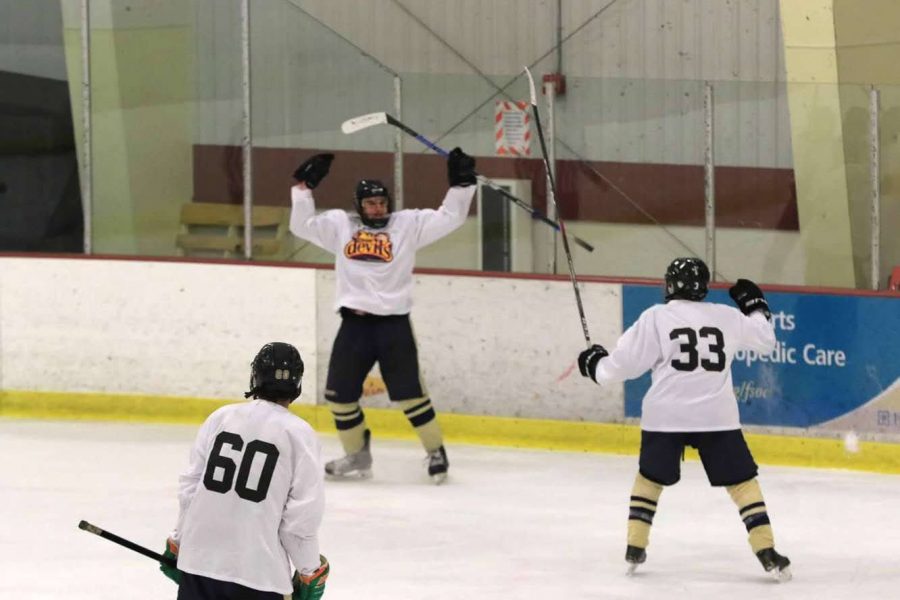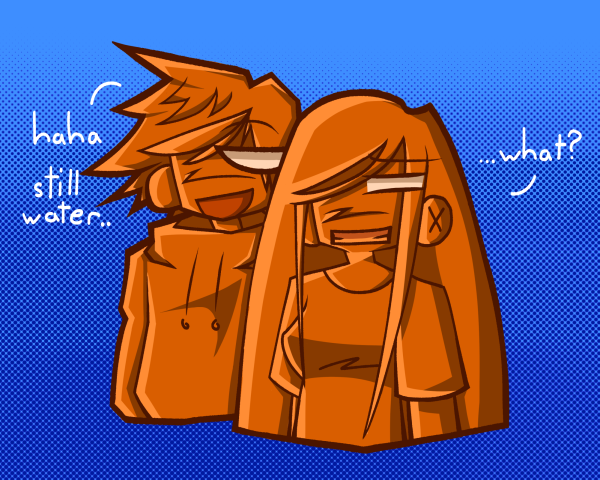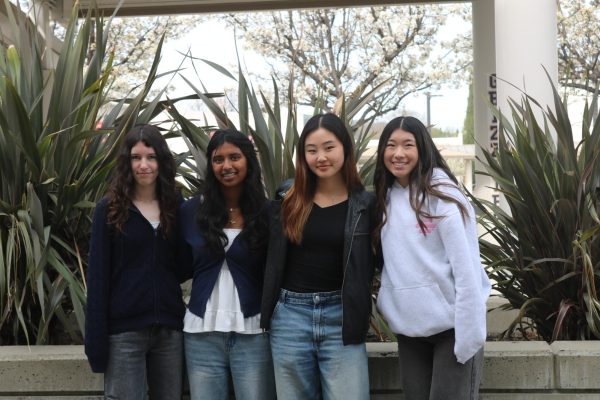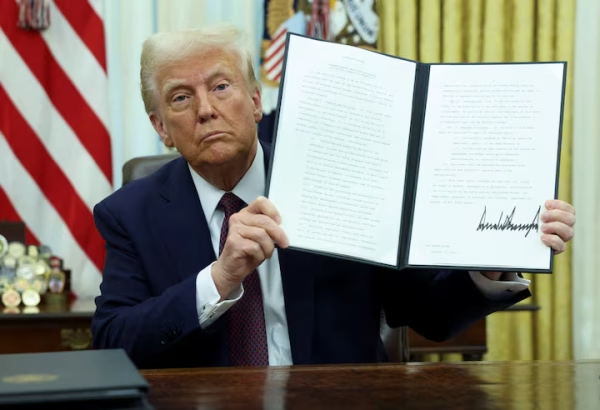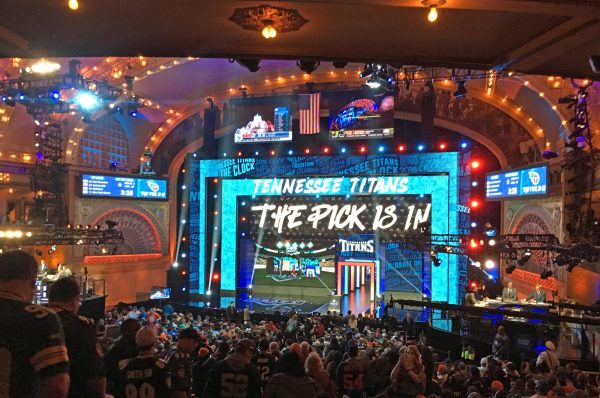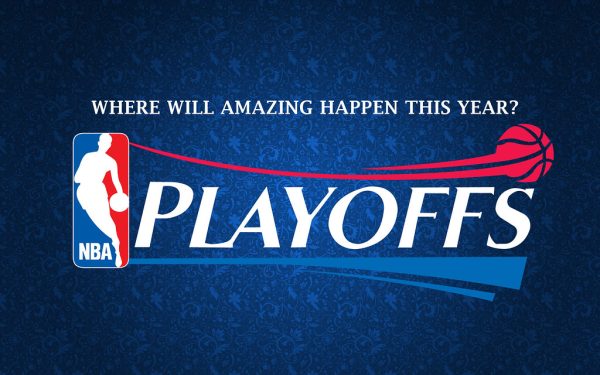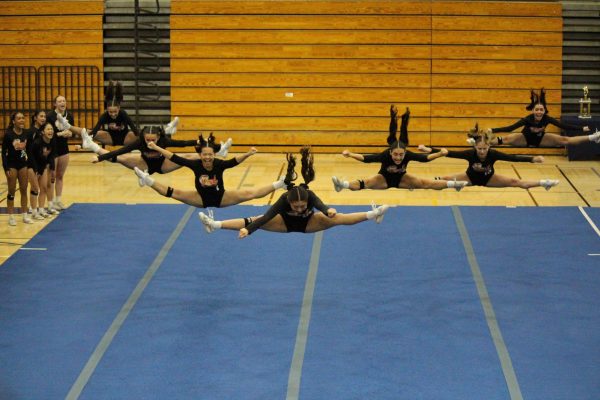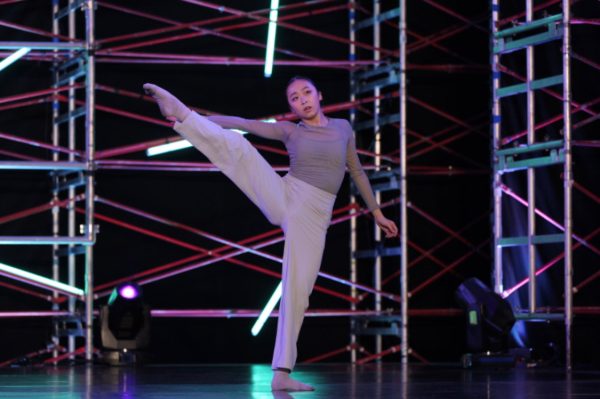Student athletes face more challenges getting recruited because of COVID-19
Photo courtesy of Cade Llewellyn
Senior Cade Llewellyn raises his arms in celebration after scoring a goal for the Tri-Valley Blue Devils 18aa-1 team. Llewellyn has traveled to several states to compete with his team and get recognized by college recruiters.
Every part of society has had to adapt to this unfavorable virus, especially the sports industry.
And one area of athletics the pandemic has had incredible effects on the college recruitment process.
While some professional sports were able to find the quickest and safest way to continue on with their programs, the collegiate and high school levels have struggled through complicated transitions in response to the coronavirus. The circumstances vary for every sport, but the restrictions on in-person recruiting caused by COVID-19 affects everyone.
Some players were more lucky than others. Cal High senior volleyball player Genevieve Bane was able to commit to Saint Mary’s College just before the restrictions were put in place.
“I ended up verbally committing a week before everything got shut down, so I didn’t have to deal with the burden of getting recruited during the pandemic,” Genevieve said.
Although Genevieve was very fortunate, many of her friends and teammates experienced a much more challenging process. It’s already difficult enough to get recruited since it takes years of preparation. But mix in a worldwide pandemic and the process gets complicated tenfold.
“When adding COVID into the mix, gyms being shut down and coaches extending their dead periods, it makes it extremely tough for student athletes to be seen,” Genevieve said.
Now more than ever, coaches communicate with recruits by email, calls, texts, and social media. Increasing their online presence is vital for athletes who are trying to grab the attention of recruiters.
“Student athletes are in a rough patch right now,” said senior hockey player Cade Llewellyn, who plays for the Tri-Valley Blue Devils 18aa-1 team. “For juniors and seniors, it’s a lot of emailing coaches and selling them their pitch and providing video.”
Llewellyn said he’s been fortunate to do more than that to get recognized by recruiters. He attended some junior league camps last summer and played in North American Prospects Hockey League games with the Blue Devils in Minnesota and Texas. His team is heading to St. Louis and back to Texas in the coming weeks.
“We’ve been very fortunate to have the opportunities to travel and have been taking protocols very seriously,” Llewellyn said. “[I’m] grateful that nobody from the team has gotten sick.”
Although Llewellyn has put forth great effort so recruiters can properly evaluate him, many athletes have had even fewer opportunities to do so as the pandemic put an abrupt stop to spring seasons, cancelled many summer events, and delayed current seasons.
Senior soccer player Katie Demilo started her recruitment process before the pandemic. Since she was interested in private schools, Demillo said, it was slightly easier to plan visits.
Just like many other athletes, Demillo depended on sending films of her training and games coaches. She was able to visit University of California, Santa Barbara and after a month of communicating through phone calls and exchange of film, she committed to the Gauchos.
“The process was definitely slowed down and stressful during the pandemic because NCAA Women’s Soccer put many restrictions onto coaches when it came to recruiting,” Demillo said. “But being consistent in emailing and contacting coaches to show interest is the most important thing.”
Athletes have been approaching the challenge of being recruited during these trying times differently. There are many good recruits who accept the current regulations, but there are also many who are more keen on taking advantage of any opportunity.
“One of our highly recruitable players has been participating in what they’re advertising as training,” said Anthony Khoo, Cal’s former men’s basketball coach. “In these so-called training sessions, he’s actually been put in pick-up basketball games where they record them and give the players opportunities for footage.”
Khoo is referring to senior Nick Tumlin, who along with a handful of other athletes were able to play these games and get footage for recruitment coaches.
“The camps were limited to 12 people, and the footage from these camps are posted to their website,” Tumlin said. “The coaches can then request full games if they’re interested.”
With coaches having to rely on thousands of personalized emails and student athletes struggling to get any recognition, these restrictions are especially unfavorable for the Class of 2021. Back in August, the NCAA approved of giving all their athletes a free year of eligibility, regardless if they play or not.
“The reason that’s significant – as a player graduates after their playing clock expires, that opens up a spot for the next year’s class,” Khoo said. “Those guys that would have opened up spots on rosters in college, they’re not going to if they’re not graduating and they know they got another year to play.”
Colleges won’t be determined to look for recruits from the Class of 2021 if their rosters stay the same.
“It’s almost this forgotten group that just gets lost in this shuffle,” Khoo said.
Added Cal’s first-year athletic director Alphonso Powell, “Right now, if you’re a [Division] 2, [Division] 3, even a mid-major athlete, unless you’ve been previously scouted, it’ll be difficult to be seen.”
